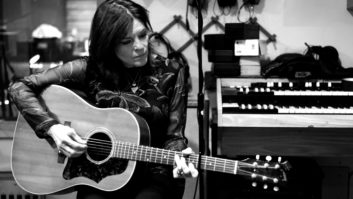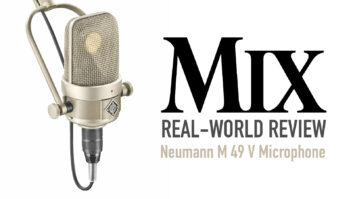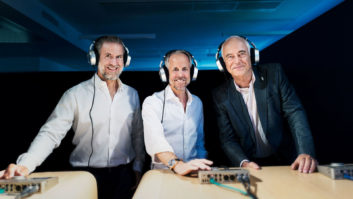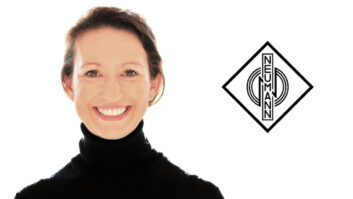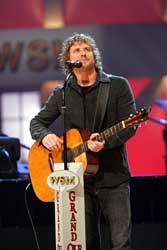
Grand Ole Opry member Dierks Bentley performs a hit from his new album using the new Sennheiser SKM 5200 for the live audience at the Opry on October 4, 2006.
Photo: Courtesy of Grand Ole Opry/Chris Hollo, photographer
Recently, the Opry’s enormously busy stage—which begins at 6:30 p.m. and will run until midnight with approximately 50 performers crossing the stage—has seen a new addition: Neumann and Sennheiser microphones, which round out an audio improvement initiative that began when Steve Gibson, music director/manager of Creative Services, joined the operation five years ago.
Gibson was asked by Pete Fisher, Opry VP and general manger, to use his years of experience in the recording industry to improve overall audio procedures. “There were practices in place that we felt could be improved upon with regard to broadcast audio, so we took a look at all aspects to improve the sound,” says Gibson. “We literally looked at every element in the signal path from microphone, all the way out the door.”
King Williams, broadcast mix engineer for the Opry, notes, “This front-end upgrade with Neumann and Sennheiser was the last piece of the puzzle. The Opry upgraded two audio consoles in 2003. We were looking for a different sound off our deck.”
“We tried quite a few different models of microphones,” says Kevin Reinen, chief technical engineer at the Opry. “After multiple microphone tests, we made a decision on what sounded best. For example, we ended up with Neumann broadcast microphones onstage because we didn’t necessarily want to block ourselves into a certain type of microphone.”
The basic format of the Opry stage comprises the upstage area that is reserved for the Grand Ole Opry band; the mid-stage line that is occupied by the piano, various guitars and their respective amplifiers; and the downstage area that is closest to the audience. The new microphones are featured at mid-stage and downstage with a Neumann BCM 104 broadcast microphone on the upright bass and a total of eight Neumann (four BCM 104s and four KMS 104s) for main vocals and instruments. One Neumann BCM 104 called “Big Rhythm” is used as a wild microphone that travels around the stage as needed. Sennheiser Evolution 609 silver microphones are used on guitar amplifiers downstage. A Sennheiser MD421 is also on the steel guitar and on guest guitar amplifiers.
“We experimented with microphones, using them in different applications than originally intended,” says Gibson. “We’re not afraid to innovate, which is part of the reason we have made certain decisions. The Opry sound starts at the stage so we apply the best audio practices given the format of the show.”
As an example, Williams says that the Neumann BCM 104 is technically mounted upside-down because there is no boom stand like in a broadcast environment. The Opry mounts it on a floor stand with a gooseneck, “so the casing is upside-down,” he explains. “It has an easy, warm sound; not too harsh or bright, with decent amount of space around it. House FOH engineer Tommy Hensley and I immediately liked the way vocals and instruments sounded in front of it.”
For more information, visit Sennheiser and Neumann at www.sennheiserusa.com and www.neumannusa.com, respectively. For more information on the Grand Ole Opry, visit www.opry.com.
